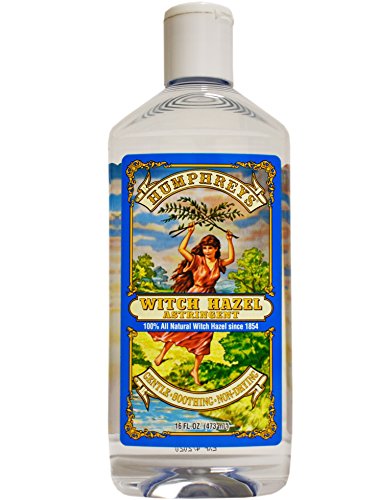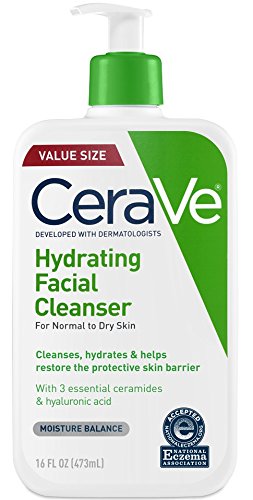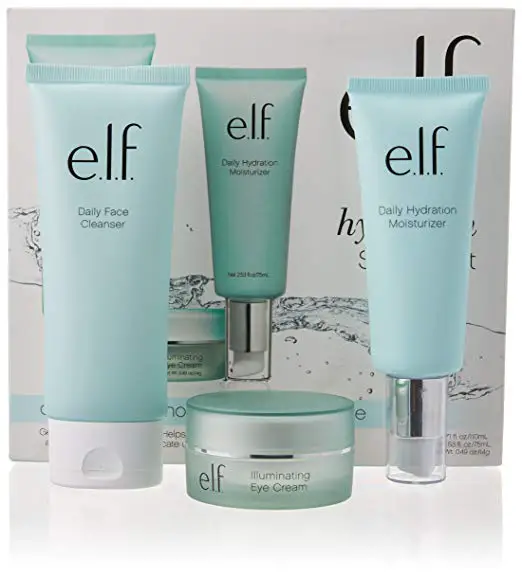An astringent can be described as any substance that can shrink tissues or dry up excess secretions. It is derived from the Latin word “astringere”, which means, “to bind fast”.
One skin care item you may be use in keeping your skin clean from dirt and excess oil are toners. And toners are sometimes referred to as astringents.
Toners could be part of your daily facial skincare routine but an alternative is using astringents. But are they necessarily better than toners? Let us find out.
Table of Contents
Difference between an Astringent and a Toner
Sometimes, it is easy to use the name of one in the place of the other. This is because they perform almost the same functions like closing the pores and removing dirt from the skin.
But an astringent can be termed a more potent type of toner. What makes it more potent? We explain below:
Content
Astringents are usually harsher than most toners. And they are usually better suited for those with oily skin than other skin types. Astringents are suitable for combating blackheads and pimples because they contain salicylic acid.
Toners have little or no alcohol; they are usually made of water. Astringents, on the other hand, can contain alcohol such as denatured alcohol. But strictly speaking, it is not every astringent that contains some alcohol.
Usage
Toners are usually used to clean the face and cleanse makeup, and they can be used every day. Those with normal skin are better off using toners than astringents, as strange as this may sound. This is because the pH balance is mostly stable in this skin type and an astringent may cause an imbalance due to its strong makeup.
With an oily skin, however, you are good with an astringent rather than a toner. An astringent would effectively dry out the extra oil in your skin, leaving you with the bare necessity. This is a function a toner would not do just as well. But it is not recommended that you use an astringent everyday because of its ability to dry the skin out.
Apart from oily skin, astringents are made for acne-prone and combination skin. Basically, removing excess sebum is the reason astringents exist.
You may switch between astringents and toners throughout the year; the choice is yours. Should your skin change with the seasons, then you can consider switching.
If your skin gets oily during the hot and humid climate, you would need the deep cleansing quality of astringent. If your skin tends to be dry during the winter months, it would be ideal to use a toner.
How frequently should you use an astringent or toner? An overuse of a toner may not hurt your skin but the overuse of an astringent will.
If you use too much astringent then your oily skin will produce even more oil to protect itself from becoming dehydrated. This is a defense mechanism by the skin that many individuals with oily skin are not aware of.
Benefits of Using an Astringent
Given, not every skin type would fare well with an astringent (some people have super-sensitive skin). But it is rare. Astringents are not what they used to be; manufacturers have upped their game. So here are some great benefits of using an astringent:
i. They are known to remove excess oil from the skin. This is especially good for oily skin.
Take note: if you skin type is normal, it is not advisable to use astringents that contain alcohol. If you do, it would remove much oil from your skin resulting in skin dryness.
ii. Visible pores are reduced by them. This helps to keep acne-causing bacteria at bay.
iii. Astringents act as anti-inflammatory agents, reducing redness and inflammation of the skin.
Side Effects of Using an Astringent Excessively
Remember that astringents usually contain ingredients that are strong enough to act fast. Therefore, it is important to be cautious of usage.
Using an astringent excessively may cause any or all of the following:
i. Change in the pH level of your skin
ii. Increase in the chances of getting acne
iii. Change in the concentration of bacteria on the skin
iv. Skin problems and irritations
Check out these interesting skin care product reviews/articles:
How to Take Care of Face Skin in Winter – What You Need to Know
How Do You Get Lighter Skin – Everything You Need to Know
What Is the Best Laser Treatment for Skin Tightening – Honest Answer
How to Improve Sagging Skin on Legs – Comprehensive Answer
How to Rejuvenate your Skin – In-depth Answer
How Long Does Exilis Skin Tightening Last – Comprehensive Answer
Factors to Consider When Selecting an Astringent
Several brands may use words like balancers or fresheners in place of astringents so you may end up getting confused. Have no worries, they all mean the same thing.
Before selecting an astringent, take note of these two important factors:
Your Skin Type
Before selecting an astringent, consider your skin type and its sensitivity. You can do a test before making a purchase; try it on small part of the arm and see the reaction.
If it itches and causes irritation on the skin, then it is the wrong choice. If your skin type is sensitive, choose astringents that do not contain harsh ingredients. And when you are not sure of the right one to choose, go with witch hazel.
Witch hazel comes from the leaves and barks of Hamamelis virginiana plant, a shrub that is native to North America. Witch hazel contains tannins (a natural substance) which gives it its astringent ability. Sometimes, this ingredient is applied to the scalp and to the skin.
Witch hazel, on its own, is commonly recognized for being able to reduce any inflammation and soothe any irritation. It is usually suitable for all kinds of skin. But some astringents with witch hazel contain high amounts of alcohol.
To get the milder forms of the witch hazel, ascertain from the listed ingredients that it does not contain alcohol. If you see witch hazel distillate, avoid the astringent. Rather, search for witch hazel extract among the ingredients. If it is still difficult for you to get an astringent that suits your skin type, visit a dermatologist.
Ingredients Used in an Astringent
Be sure to check for the ingredients in an stringent before buying. The ingredients used in an astringent are very important. This is because the ingredients used in a product would determine its effectiveness.
If your skin type is dry, choose astringent with the following ingredients: butylene glycol, glycerin, sodium lactate, propylene glycol, hyaluronic acid and aloe.
Oily skin should go for astringents that contain alcohol. Alcohol is an ingredient that helps to reduce the production of excess sebum, leaving your skin fresh.
People with skin type that is prone to blemish or acne should select astringents with ingredients that combat blemish. Examples of such ingredients include glycolic acid and salicylic acid.
If your skin type is sensitive, take extra care when making a choice of astringents. Avoid the following ingredients: alcohol, fragrance, colorants, menthol, and sodium lauryl sulfate. Astringents that do not contain alcohol are gentler for the skin.
It is ideal that you use astringents manufactured from natural sources such as plants, herbs and fruits.
Tips to Get the Most from Using an Astringent
Wash Your Face
Before using astringents, ensure you properly wash your face with a mild soap. But be sure to thoroughly wash away soap from your face before using it.
Use Moisturizers after Applying
The benefits of using moisturizers cannot be overemphasized. They help to provide and retain moisture in the skin through emollients, humectants and occlusives.
It is important that you apply the right moisturizer suitable for your skin after using any astringent. That is not all; you should use moisturizers that contain sunscreen. Here is why: after applying astringent, your skin is quick to respond to the sun rays.
Don’t Apply an Astringent on Dry Areas
If your skin type is combination, dab your astringent on oily parts of the skin such as chin, noise and forehead.
Use Once Daily
Due to its usual potency and strength, it is best to use an astringent once a day. This is to avoid causing excessive dryness to the skin.
Don’t Apply on Abrasions and Cuts
This is because astringents can cause burns when used on scratches or cuts.
Age Suitability for Using an Astringent
Teenagers usually have more sensitive skin than adults and they are more likely to get acne. Because of this, the temptation to use any skincare product that treats acne is high. But their skin may be too delicate for an astringent.
Apply Gently
Do not apply an astringent abrasively across the skin. You may break the skin that way. Instead, as gently as you can, glide the cotton wool wad or any other application tool you are using, across your skin.
Don’t Change It Frequently
If you have a negative reaction to any astringent you choose, you can discontinue. Otherwise, stick to one for some time before changing, if you have to. This is to allow your skin to adjust to it and give it time to work.
Avoid Sleeping on a Cotton Pillowcase
Pressing your face constantly on a pillow cover wears the skin out. As time goes on and this continues, the skin begins to show signs and creases. This is due to the collagen wearing out.
If it is your first time using an astringent, change your pillowcase every night for the first week.
Pillowcases can store up residues from face lotions and even conditioners. These residues have the ability to clog the facial pores with time.
Therefore, if you are prone to have pimples, acne or a generally oily face, change the cases of your pillows once in a week, at the very least. Wash them thoroughly, in hot or warm water preferably, to kill bacteria that can cause breakouts.
Wrap Your Hair Up before Bed
You can have forehead breakouts due to the hair care products that you use especially if you have long hair. Always pull your hair off your face and clip them back before bed.
Keep Hands Away from Face
Anytime you persistently touch your face, especially with unwashed hands, you create a greater problem. You end up causing deeper scars and irritations on your skin. Do not touch your face all the time, even if your hands are clean.
Get a Good Night’s sleep
When you do not rest or sleep enough, it shows on your skin. It becomes pale and lackluster. Little or no sleep can cause the skin to produce free radicals. But sleeping well helps your skin look its best.
Don’t Take Hot Showers Often
It is tempting to take hot showers but it is problematic for the skin. Hot showers can rid your skin of important nutrients and moisture meant to keep it healthy. It is advisable to take warm or cool showers instead.




